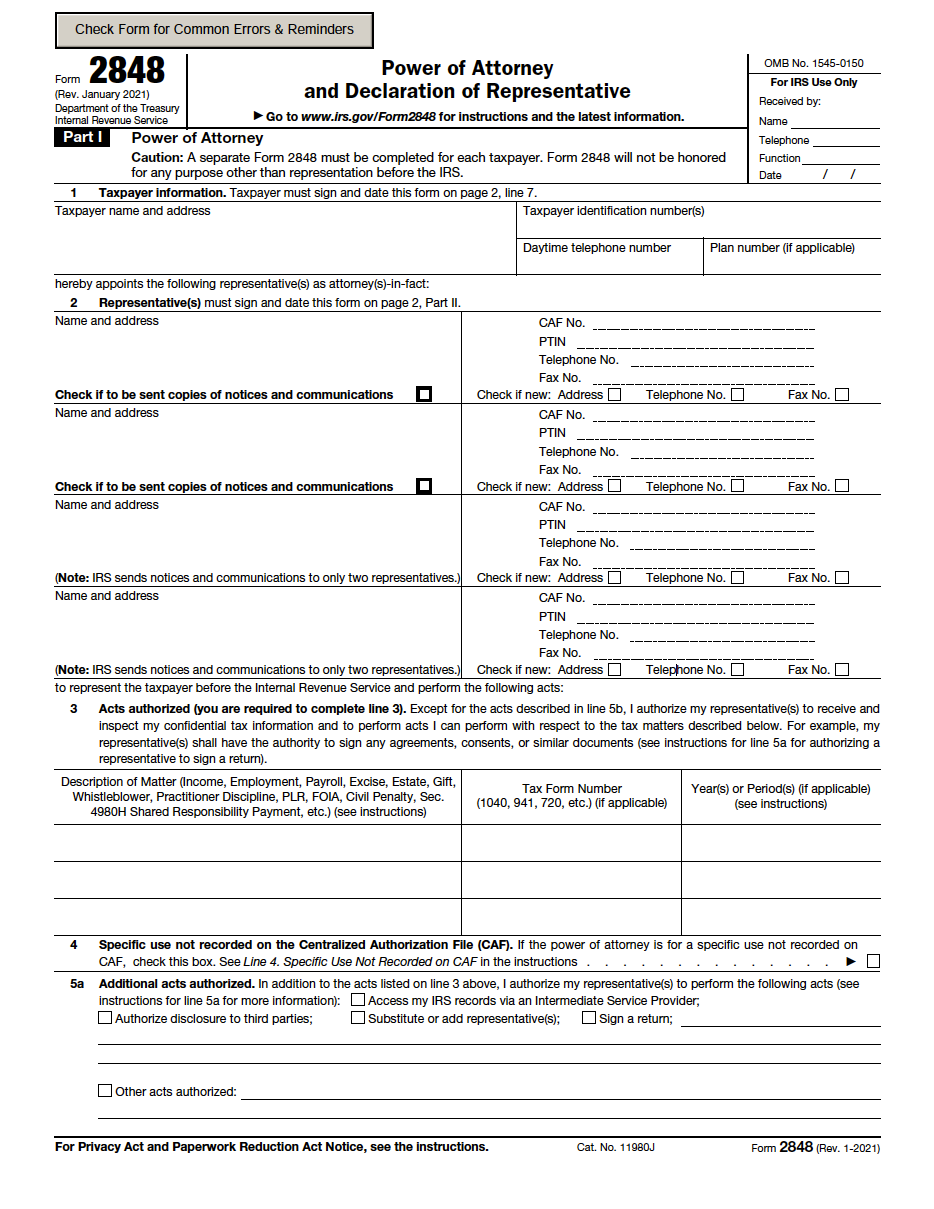Supplemental Forms
- Form 2848 Instructions – Detailed instructions on how to complete the Tax Power of Attorney Form 2848.
- Form 8821 (Tax Information Authorization) – Authorizes a person (designee) to inspect/receive confidential information relating to a taxpayer’s return and IRS records.
- Form 8821 Instructions – Instructions on how to complete the Tax Information Authorization Form 8821.
By State
- Alabama
- Alaska
- Arizona
- Arkansas
- California
- Colorado
- Connecticut
- Delaware
- Florida
- Georgia
- Hawaii
- Idaho
- Illinois
- Indiana
- Iowa
- Kansas
- Kentucky
- Louisiana
- Maine
- Maryland
- Massachusetts
- Michigan
- Minnesota
- Mississippi
- Missouri
- Montana
- Nebraska
- Nevada
- New Hampshire
- New Jersey
- New Mexico
- New York
- North Carolina
- North Dakota
- Ohio
- Oklahoma
- Oregon
- Pennsylvania
- Rhode Island
- South Carolina
- South Dakota
- Tennessee
- Texas
- Utah
- Vermont
- Virginia
- Washington
- West Virginia
- Wisconsin
- Wyoming
What a Tax Power of Attorney Authorizes
Depending on what the principal states in the form, the appointed agent can execute the following duties:
- View and handle sensitive tax documents and information
- Sign the principal’s tax return
- Permit disclosure to third (3rd) parties
- Add or substitute other representatives
- Other powers as designated by the principal on the form
How to Use a Tax Power of Attorney
Step 1 – Select the Agent

- Certified public accountant (CPA)
- Tax attorney
- Enrolled agent
- Family member
- Close friend
Step 2 – Complete the Form

When authorizing a representative to complete state taxes, the principal must select the appropriate state form and complete and sign the document. The representative may also have to sign, and in some states, notarization is required.
Step 3 – Send to Appropriate Address
Federal Taxes
If the principal lives in AL, AR, CT, DE, DC, FL, GA, IL, IN, KY, LA, ME, MD, MA, MI, MS, NH, NJ, NY, NC, OH, PA, RI, SC, TN, VT, VA, or WV, Form 2848 should be sent to the following address:
If the principal lives in AK, AZ, CA, CO, HI, ID, IA, KS, MN, MO, MT, NE, NV, NM, ND, OK, OR, SD, TX, UT, WA, WI, or WY, the form should be sent to the following address:
State Taxes
Completed documents should be sent to the address as instructed on the form.


